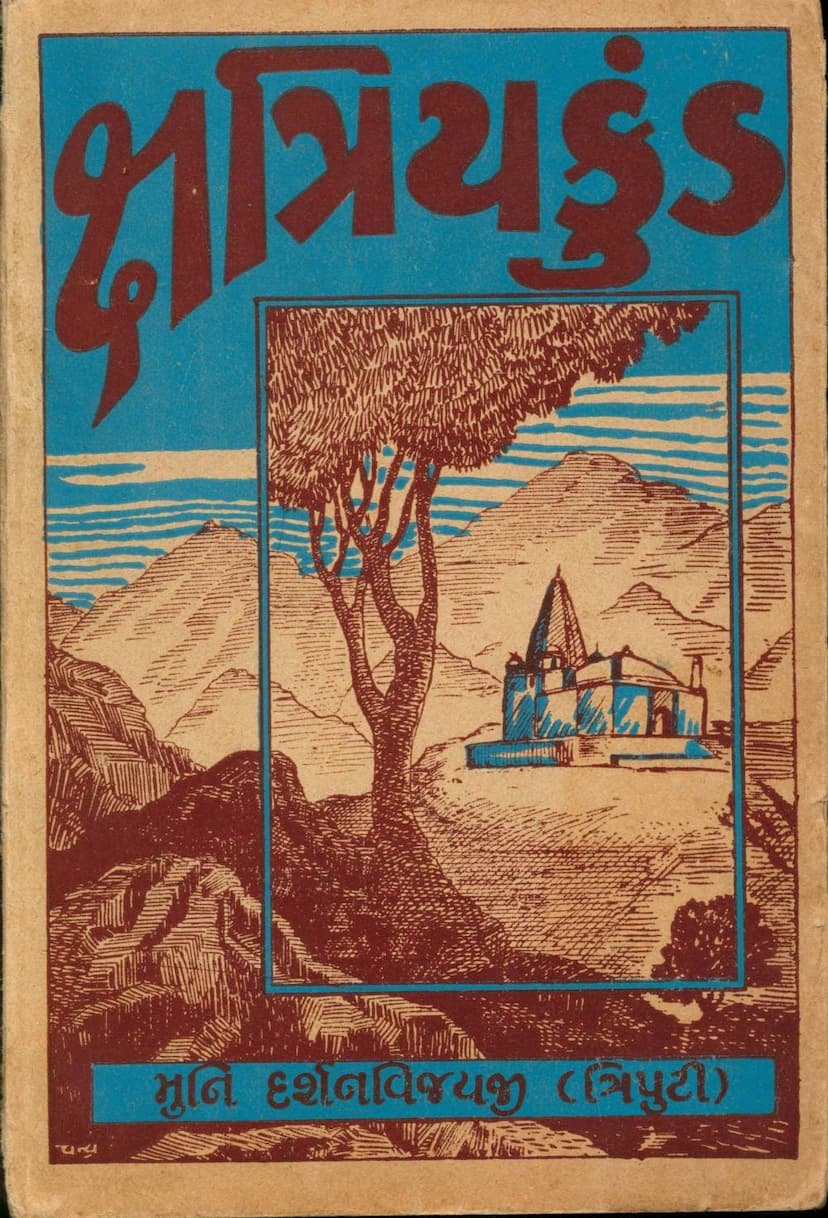Kshatriyakund
Added to library: September 2, 2025

Summary
Here's a comprehensive summary of the Jain text "Kshatriyakund" by Muni Darshanvijayji, based on the provided pages:
Book Title: Kshatriyakund Author: Muni Darshanvijayji (Tripuṭī) Editor: Muni Jñānavijayji Publisher: Shri Jain Prāchya Vidyābhavan, Ahmedabad Publication Year: 1950 (Vikram Samvat 2006)
Overview:
The book "Kshatriyakund" is a scholarly work by Muni Darshanvijayji that delves into the historical and archaeological debate surrounding the true birthplace of Lord Mahavir Swami, the 24th Tirthankar of Jainism. The author aims to present a reasoned analysis of the evidence and popular beliefs regarding Kshatriyakund, the traditional birthplace.
Key Themes and Arguments:
-
The Problem of Locating Kshatriyakund:
- The central issue addressed is the discrepancy in identifying the exact location of Kshatriyakund, Lord Mahavir's birthplace.
- The author notes that for centuries, scholars and traditions have debated this, with various theories and interpretations.
- The book begins by recounting a personal anecdote where the author, while traveling, found that locals recognized the place as "Janmasthan" (birthplace) rather than "Kshatriyakund," indicating a disconnect in nomenclature.
-
Historical Context of Archaeological Research:
- A significant portion of the book is dedicated to tracing the history of archaeological research and epigraphy in India, starting from the British colonial era.
- It highlights the contributions of various scholars like Sir William Jones, Henry Colebrooke, and General Cunningham in deciphering ancient scripts (Brahmi, Kharoshti) and excavating historical sites.
- This section emphasizes the rigorous and painstaking nature of archaeological work, requiring deep knowledge of language, script, art, architecture, geography, religion, and customs.
-
The Debate on Kshatriyakund's Location: The book presents and analyzes three main viewpoints:
- Śvetāmbara Tradition: Generally places Kshatriyakund near Lachhwad (Lachhwad is a village in Bihar, India, traditionally considered to be the site of Kshatriyakund). The author elaborates on the specific geographical features described in this tradition.
- Digambara Tradition: Believes Kshatriyakund to be Kundalpur, located near Nalanda. The book discusses the scriptural basis and arguments for this viewpoint.
- Western Scholars' View (and modern scholars): This perspective, championed by scholars like Dr. Hermann Jacobi, Dr. A. A. R. Hale, and later supported by Indian scholars like Pandit Kalyanvijayji and Ā. Śrīvijayendrasūri, argues that Kshatriyakund was a part of or very near Vaishali (modern Besadh). They often identify it with places like Kotigrama, Kaillag, or Vasukund.
-
Author's Analysis and Argument for Lachhwad:
- Muni Darshanvijayji critically examines the arguments of each school of thought.
- He scrutinizes the interpretations of scriptural passages by Western and modern scholars, suggesting that some interpretations may be based on assumptions or misreadings.
- The author meticulously analyzes geographical descriptions, linguistic similarities, and historical events mentioned in Jain and Buddhist scriptures.
- A key part of his argument relies on the close proximity and historical connection between Kshatriyakund and Pavapuri (where Lord Mahavir attained Nirvana), as the news of Mahavir's demise reached Kshatriyakund very quickly. He argues this proximity is best explained by the Lachhwad location.
- He also counters the argument that Lord Mahavir did not spend a monsoon (chātumās) in Kshatriyakund, suggesting possible reasons like the terrain or adherence to the cultural practice of not dwelling in one's birthplace for extended periods.
- The author concludes that, based on the available evidence and his interpretation of the scriptures, the traditional Kshatriyakund near Lachhwad is the most likely and historically accurate birthplace of Lord Mahavir.
-
Lord Mahavir's Life and His Connection to Vaishali:
- The book details the genealogies of Lord Mahavir's parents, Siddhartha and Trishala.
- It explores the significance of titles like "Vaishali" and "Videha" associated with Lord Mahavir and his mother, Trishala.
- The author explains that while Lord Mahavir had a close connection to Vaishali (his maternal aunt's capital and a place where he spent many monsoons), this does not automatically mean he was born there. He suggests these titles might refer to his maternal lineage or his extensive preaching activities in the region.
-
The Role of Jain Literature and Traditions:
- The book highlights the importance of Jain Agamas, commentaries (like Niryukti, Bhashya, Churni), and historical texts (like Pattavalis) in understanding Jain history and locating sacred sites.
- It emphasizes the meticulous preservation of lineage and historical records within the Jain tradition.
Publication Details:
- The book was published by Jain Prachya Vidyabhavan, Ahmedabad, with the support of patrons who wished to commemorate their departed family members.
- The text includes a detailed table of contents and footnotes, indicating its academic nature.
- The publication includes a foreword by the Jain Society, Ahmedabad, expressing joy in presenting this work to the public.
In Essence:
"Kshatriyakund" is a comprehensive research work that defends the traditional Jain belief about the location of Lord Mahavir's birthplace at Lachhwad, Bihar. It engages with the complex historical and archaeological evidence, refutes alternative theories with scriptural and logical arguments, and underscores the depth and accuracy of the Jain historical tradition. The book serves as a testament to the author's dedication to preserving and clarifying Jain historical knowledge.